Complete Solutions to JEE (Main and Advanced)/ Medical Entrance Special of chapter LAWS OF MOTION of Class 11 book with complete answers and questions
| Class 11 | PHYSICS |
| Chapter | LAWS OF MOTION |
| PRADEEP | JEE (Main and Advanced)/ Medical Entrance Special |
| Number Of Questions | 93 |
| Academic Year | 2023-24 |
Three blocks `A` , `B` and `C` of masses `4kg` , `2kg` and `1kg` respectively are in contact on a frictionless surface, as shown. If a force of `14N is applied on the `4kg` block, then the contact force between `A` and `B` is.
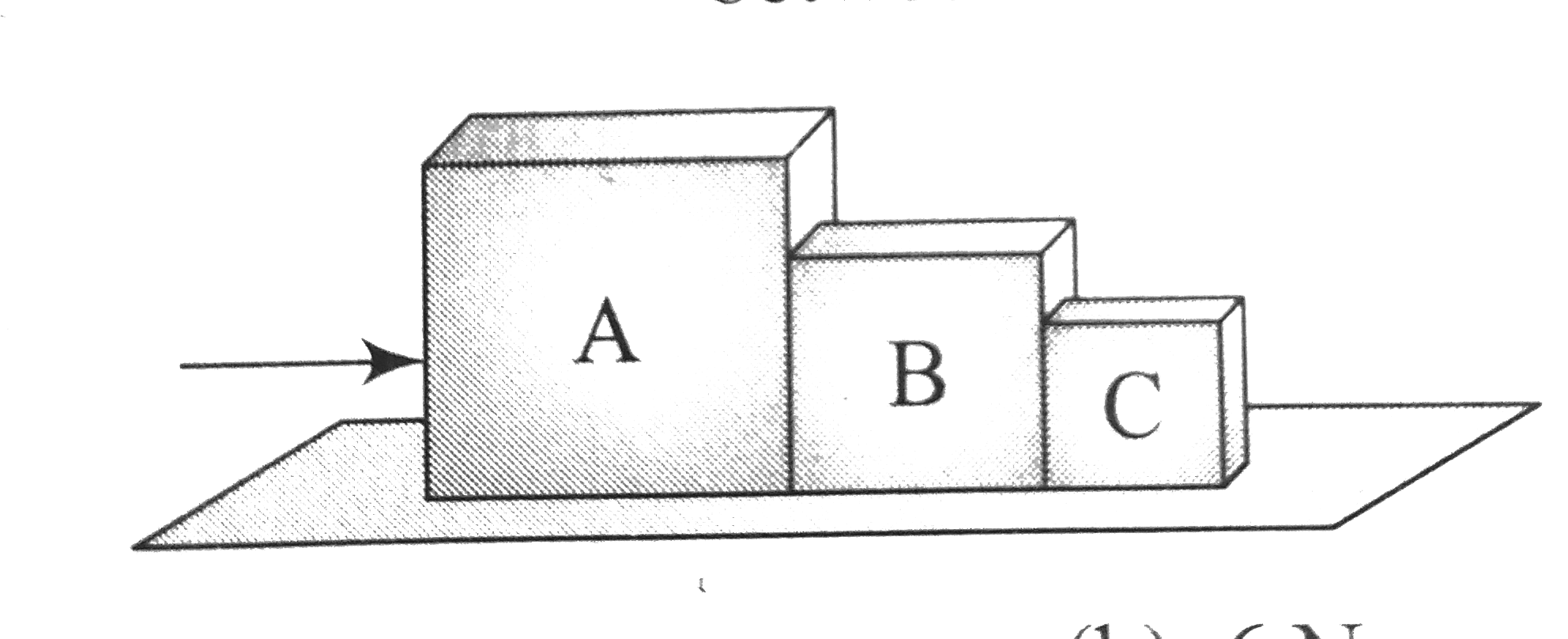 03:49View Solution
03:49View SolutionA balloon has `8g` of air `A` small hole is pierced into it The air escapes at a unifrom rate of `7m//s` If the ballon shrinks in `5.6 s` then the average force acting on the ballon is.
02:21View SolutionA force produces an acceleration of `4m//s^(2)` in a body of `m_(1)kg` in another body of mass `m_(2)kg` If the same force is applied to `(m_(1) + m_(2))` then the acceleration will be
01:40View SolutionA ball weighing `10g` hits a hard surface vertically with a speed of `5m//s` and rebounds with the same speed The ball remains in contact with the surface speed The ball remains in contact with the surface for `0.01s` The average force exerted by the surface on the ball is .
02:25View SolutionThe pulleys and strings shown in the figure are smooth and of negligible mass. For the system to remain in equilibrium, the angle `theta` should be
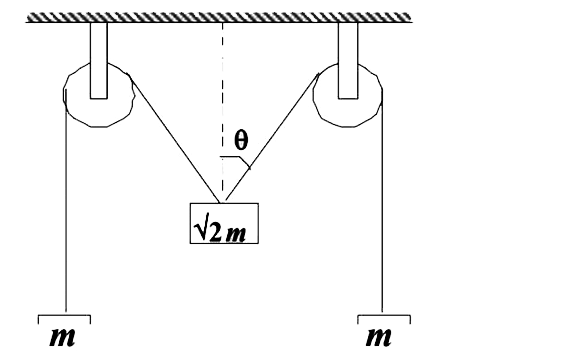 03:00View Solution
03:00View SolutionIn the figure given below, the position time graph of a particle of mass 0.1kg is shown. The impulse at t=2 sec is
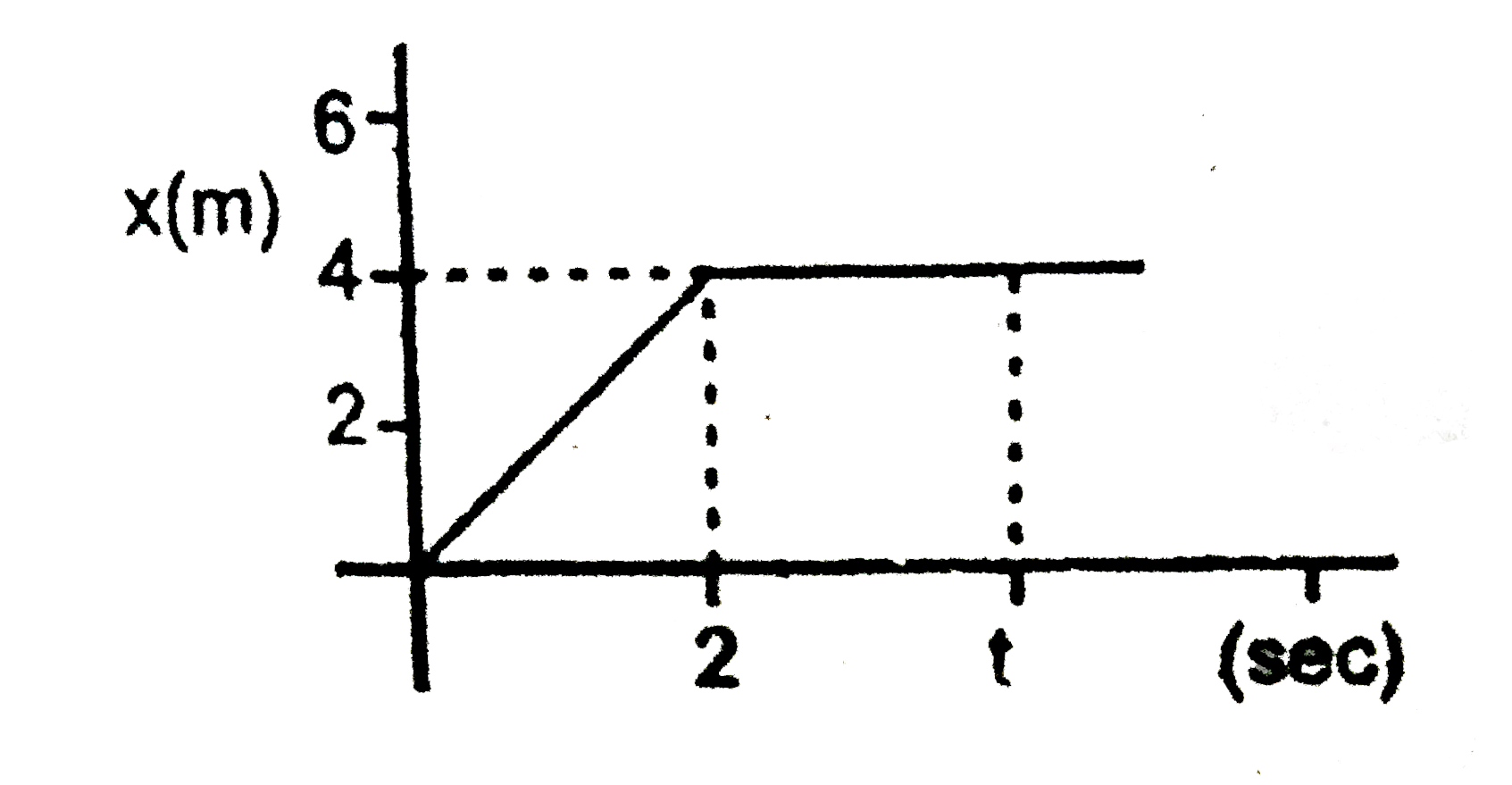 02:04View Solution
02:04View SolutionA mass of M kg is suspended by a weightless string. The horizontal force that is required to displace it until the string makes an angle of `45^@` with the initial vertical direction is
08:40View SolutionA ball of mass 0.2 kg is thrown vertically upwards by applying a force by hand. If the hand moves 0.2 m while applying the force and the ball goes upto 2 m height further, find the magnitude of the force. (Consider `g=10m//s^2`).
03:42View SolutionA particle of mass m is projected with velocity upsilon making an angle of `45^(@)` with the horizontal When the particle lands on the level ground the mag nitude of the change in its momentum will be .
02:32View SolutionThe figure shows the position-time (x-t) graph of one-dimensional motion of a body of mass 0.4kg. The magnitude of each impulse is
 03:36View Solution
03:36View SolutionA stone is dropped from a height `h` . It hits the ground with a certain momentum `P` . If the same stone is dropped from a height `100%` more thanthe preyiious height, the momentum when it hits the ground will change by
05:28View SolutionThree blocks `A` , `B` and `C` of masses `4kg` , `2kg` and `1kg` respectively are in contact on a frictionless surface, as shown. If a force of `14N is applied on the `4kg` block, then the contact force between `A` and `B` is.
 03:49View Solution
03:49View SolutionA sparrow flying in air sits on a stretched telegraph wire If weight of the sparrow is `W` which of the following is true about the tension `T` produced in the wire ?
02:10View SolutionA heavy iron bar of weight `W` is having its one end on the ground and the other on the shoulder of a man The rod makes an angle `theta` with the horizontal What is the weight experienced by the man ?
03:03View SolutionA block is kept on a frictionless inclined surface with angle of inclination `alpha`. The incline is given an acceleration 'a' to keep the block stationary. Then a is equal to
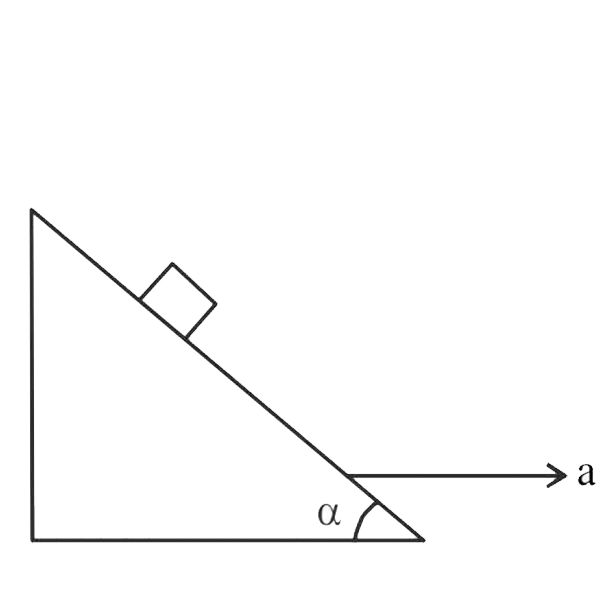 04:39View Solution
04:39View SolutionA balloon with mass `m` is descending down with an acceleration a `(where altg)` . How much mass should be removed from it so that it starts moving up with an acceleration a?
05:16View SolutionTwo block `A` and `B` of masses `3m` and `m` respectively are connected by a massless and nextensible string. The whole system is suspended by a massless spring as shown in figure. The magnitudes of acceleration of `A` and `B` immediately after the string is cut, are resectively
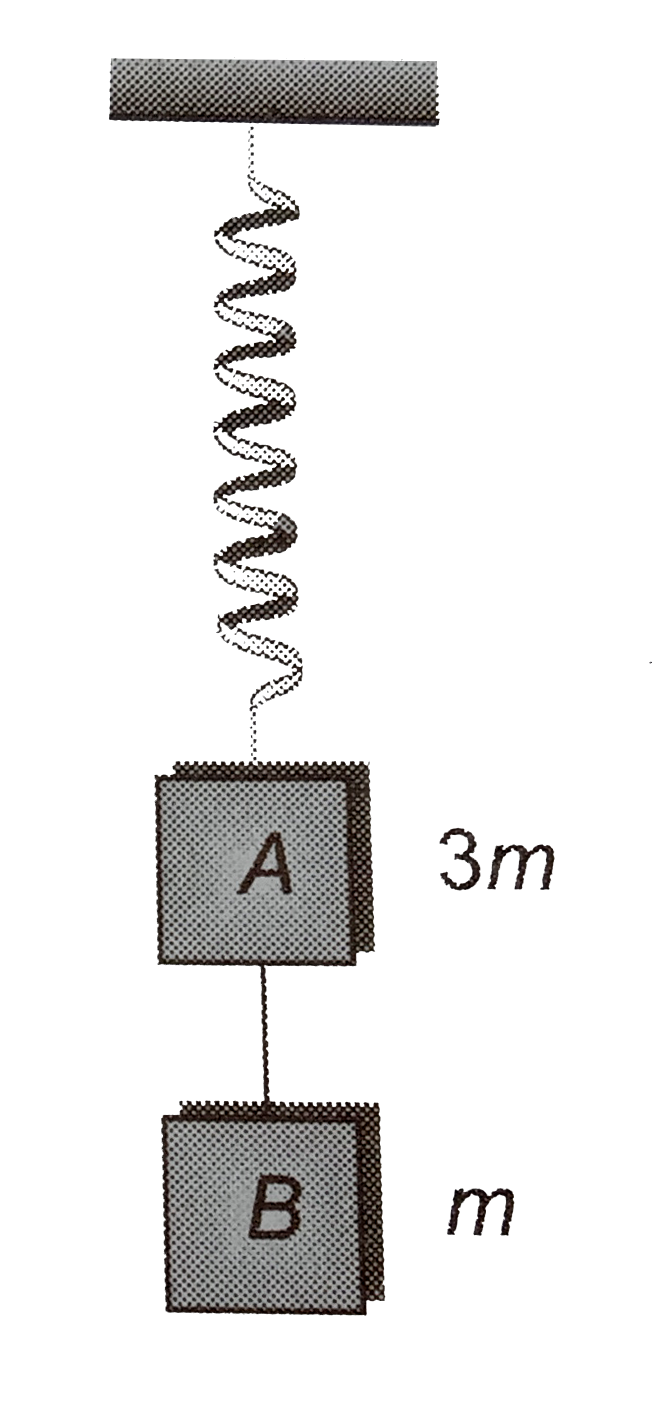 04:21View Solution
04:21View SolutionA man of `50 kg` mass is standing in a gravity free space at a height of `10m` above the floor. He throws a stone of `0.5 kg` mass downwards with a speed `2m//s`. When the stone reaches the floor, the distance of the man above the floor will be
04:58View SolutionA body of mass `1kg` initially at rest explodes and breaks into three parts of masses in the ration ` 1: 2: 3.` If the two pieces of equal masses fly off perpendicular to each other with a speed of `30m//s` The speed of third piece will be .
03:16View SolutionA bomb at rest explodes into three parts of the same mass the momenta of the two parts are `- 2 p hati` and `p hat j` The momentum of the third part will have a magnitude of :
02:03View SolutionA ball of mass 0.2 kg rests on a vertical post of height 5 m. A bullet of mass 0.01 kg, travelling with a velocity `V m//s` in a horizontal direction, hits the centre of the ball. After the collision, the ball and bullet travel independently. The ball hits the ground at a distance of 20 m and the bullet at a distance of 100 m from the foot of the post. The velocity V of the bullet is
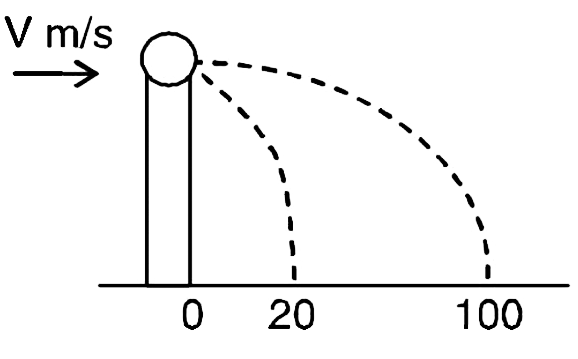 05:58View Solution
05:58View SolutionA `600 kg` rocket is set for a vertical firing If the exhaust speed is `100m//s` the gas ejected per sec to supply the thrust needded to overcome the weigth of rocket is .
02:19View SolutionA light string passing over a smooth light pulley connects two blocks of masses `m_1` and `m_2` (vertically). If the acceleration of the system is `g//8`, then the ratio of the masses is
04:31View SolutionA lift is moving down with an acceleration a. A man in the lift drops a ball inside the lift. The acceleration of the ball as observed by the man in the lift, and a man standing stationary on the ground are, respectively.
03:11View SolutionThe line of action of the resultant of two like parallel forces shifts by one-fourth of the distance between the forces when the two forces are interchanged. The ratio of the two forces is:
05:18View SolutionA mass of `3kg` descending vertically downwards supports a mass of `2kg` by means of a light string passing over a pulley At the end of `5s` the stringbreaks How much high from now the `2kg` mass will go `(g = 9.8m//^(2))`.
02:50View SolutionA `0.5 kg` ball moving with a speed of `12 m//s` strikes a hard wall at an angle of `30^(@)` with the wall. It is reflected with the same speed and at the same angle . If the ball is in contact with the wall for `0.25 s`, the average force acting on the wall is
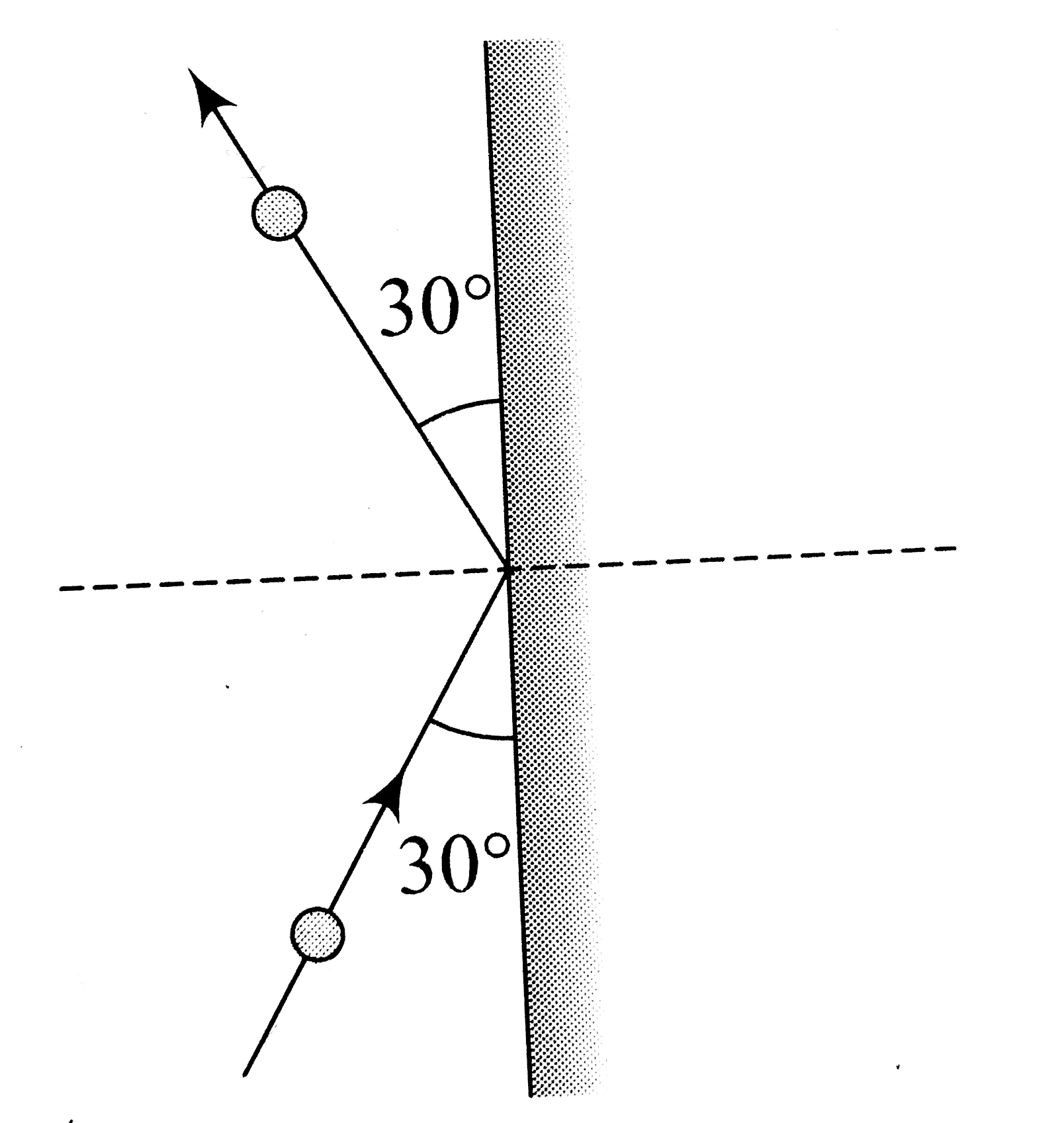 02:07View Solution
02:07View SolutionThe tension in the string in the pulley system shown in
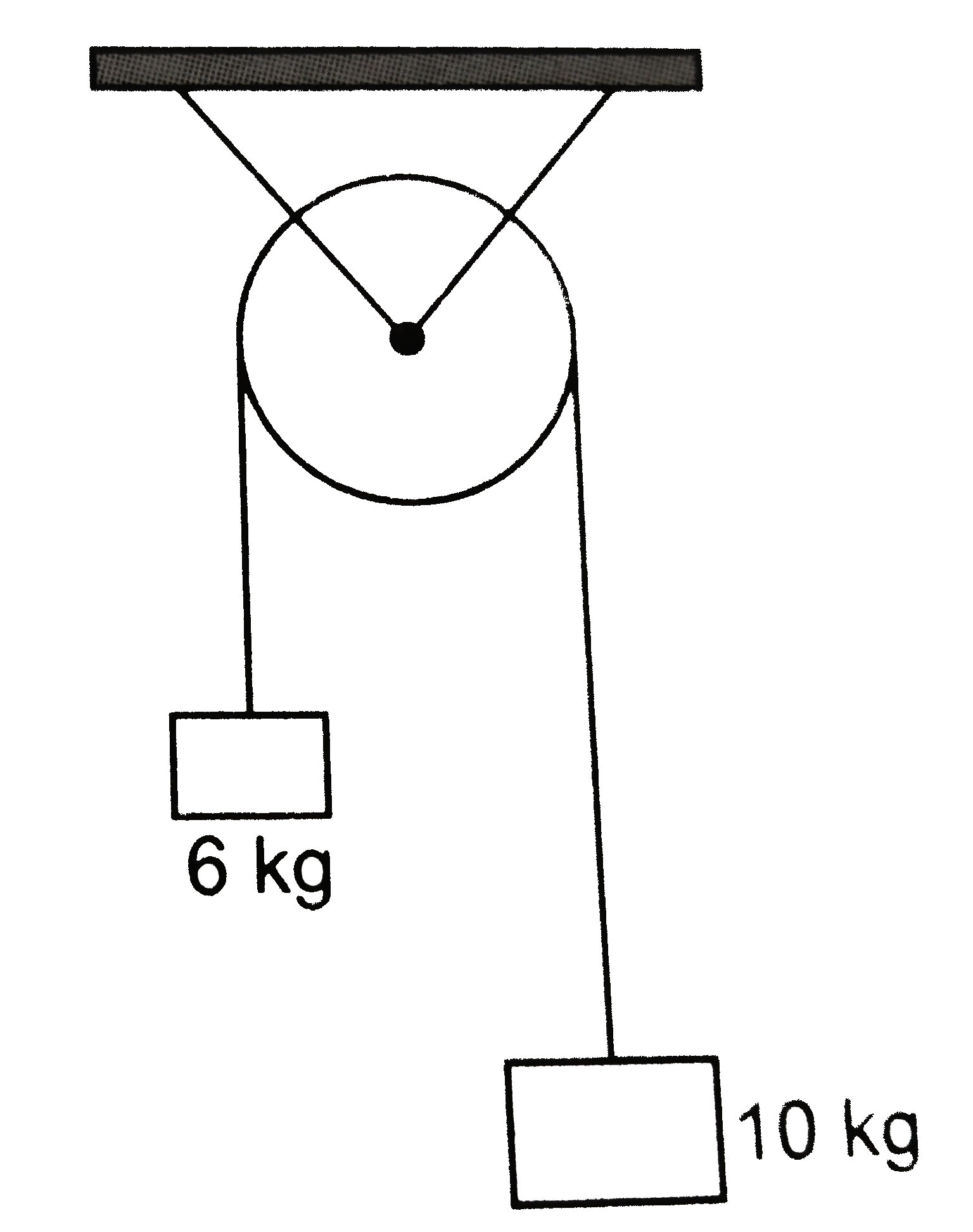 .02:12View Solution
.02:12View SolutionA shell of mass `200g` is ejected from a gun of mass `4 kg` by an explosion that generate `1.05 kJ` of energy. The initial velocity of the shell is
04:01View SolutionAn explosion blows a rock into three parts. Two parts go off at right angles to each other . These two are `1 kg` first part moving with a velocity of `12 ms^(-1) and 2 kg` second part moving with a velocity of `8 ms^(-1)`. If the third part flies off with a velocity of `4 ms^(-1)`. Its mass would be
02:21View SolutionThe force `F` acting on a partical of mass `m` is indicated by the force-time graph shown below. The change in momentum of the particle over time interval from zero to 8 `s` is.
 04:04View Solution
04:04View SolutionA block `A` of mass `m_(1)` rests on a horizontal table. A light string connected to it passes over a frictionless pulley at the edge of table and from its other end another block `B` of mass `m_(2)` is suspended. The coefficient of knetic friction between the block and table is `mu_(k)` . When the block `A` is sliding on the table, the tension in the string is.
06:50View SolutionGiven in figure are two blocks A and B of weight 20N and 100N, respectively. These are being pressed against a wall by a force F as shown. If the coefficient of friction between the blocks is 0.1 and between block B and the wall is 0.15, the frictional force applied by the wall on block B is:
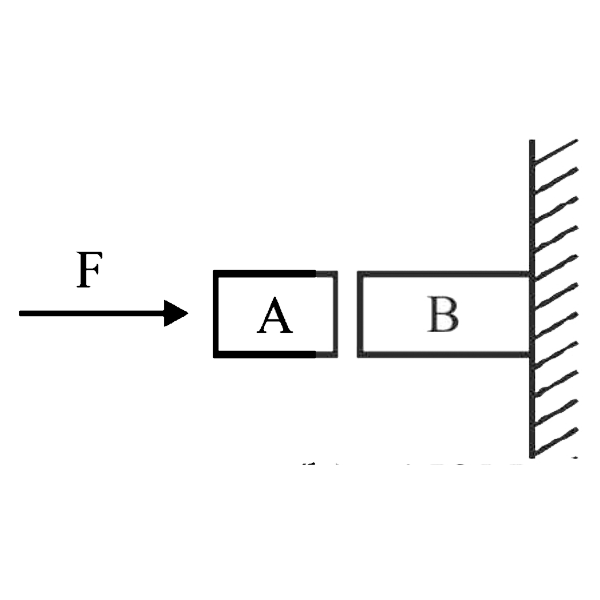 04:33View Solution
04:33View SolutionA weight w is suspended from the mid -point of a rope, whose ends are at the same level In order to make the rope perfectly horizontal, the force applied to each of its ends must be
02:24View SolutionA block has been placed on an inclined plane with the slope angle `theta`. Block slide down the plane at constant speed. The cofficient of Kinetic friction is equal to
02:55View SolutionA block `A` of mass `m_(1)` rests on a horizontal table. A light string connected to it passes over a frictionless pulley at the edge of table and from its other end another block `B` of mass `m_(2)` is suspended. The coefficient of knetic friction between the block and table is `mu_(k)` . When the block `A` is sliding on the table, the tension in the string is.
06:50View SolutionA plank with a box on it at one end is gradully raised about the other end. As the angle of inclination with the horizntal reaches `30^(@)` , the box starts to slip and slide `4.0m` down the plank in `4.0s` . The coefficients of static and knitic friction between the box and the plank will be, respectively.
 07:24View Solution
07:24View SolutionA body of mass 40kg resting on a rough horizontal surface is subjected to a force `P` which is just enough to start the motion of the body. If `mu_(s)=0.5mu_(k)=0.4 , g=10ms^(-2)` an dthe force `P` is continuously applied on the body, then the accceleration of the body is.
06:08View SolutionBlock `A` of mass `m` and block `B` of mass `2m` are placed on a fixed triangular wedge by means of a light and inextensible string and a frictionless pulley as shown in fig . The wedge is inclined at `45^(@)` to the horizontal on both sides . The coefficient of friction between the block `A`and the wedge is `2//3` and that between the block `B` and the wedge is `1//3` .If the system of `A and B` is released from rest then find .
a. the acceleration of `A`
b. tension in the string
c.the magnitude and direction of the frictional force acting on `A`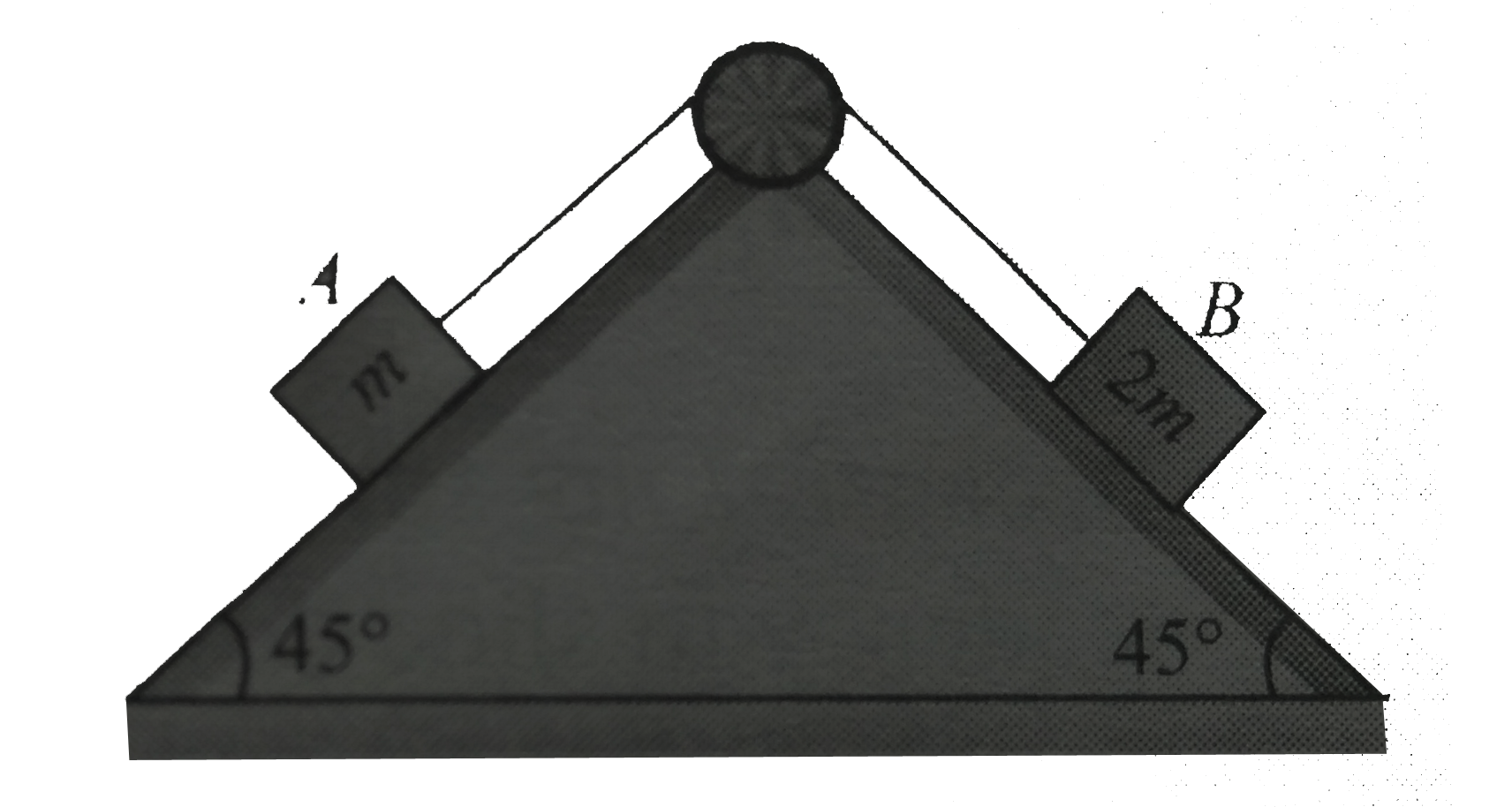 12:06View Solution
12:06View SolutionA block of mass is placed on a surface with a vertical cross section given by `y=x^3/6`. If the coefficient of friction is 0.5, the maximum height above the ground at which the block can be placed without slipping is:
02:21View SolutionA uniform wooden stick of mass 1.6 kg and length l rests in an inclined mannar on a smooth, vertical wall of height `h(ltl)` such that a small portion of the stick extends beyond the wall. The reaction force of th wall on the stick is perpendicular to the stick. The stick makes an angle of `30^@` with the wall and the bottom of the stick is on a rough floor. The reaction of the wall on the stick is equal in magnitude to the reaction of the floor on the stick. The ratio h/l and the friectional force f at the bottom of the stick are `(g = 10 ms^2)`
05:23View SolutionA block of mass `4kg` is placed on a rough horizontal plane A time dependent force `F = kt^(2)` acts on the block where `k = 2N//s^(2)` Coefficient of friction `mu = 0.8` force of friction between the block and the plane at `t = 2s` is
01:54View SolutionA block is gently placed on a conveyor belt moving horizontal with constant speed After `t = 4s` the velocity of the block becomes equal to velocity of the belt If the coefficient of friction between the block and the belt is `mu = 0.2`, then the velocity of the conveyor belt is .
02:41View SolutionA `30kg` block rests on a rough horizontal surface A force of `200N` is applied on the block The block acquires a speed of `4m//s` starting from rest in `2s` What is the value of coefficient of friction ? .
02:48View SolutionA wooden box of mass `8kg` slides down an inclined plane of inclination `30^(@)` to the horizontal with a constant acceleration of `0.4ms^(-2)` What is the force of friction between the box and inclined plane ? `(g = 10m//s^(2))` .
02:22View SolutionThe upper half of an inclined plane with inclination `phi` is perfectly smooth while the lower half is rough. A body starting from rest at the top will again come to rest at the bottom if the coefficient of friction for the lower half is given by
05:20View SolutionA body takes time `t` to reach the bottom of a smooth inclined plane of angle `theta` with the horizontal. If the plane is made rough, time taken now is `2t`.The coefficient of friction of the rough surface is
05:27View SolutionA given object taken n time more time to slide down `45^(@)` rough inclined plane as it taken to slide down a perfectly smooth `45^(@)` incline The coefficient of kintic friction between the object and the incline is .
04:04View SolutionThe coefficient of static friction `mu_(s)` between block A of mass `2kg` and the table as shown in is 0.1 What would be the maximum mass value of blocks `B` so that the two bloks do not move ? The string and the pulley are assumed to be smooth and massless `(g = 10m//s^(2))`
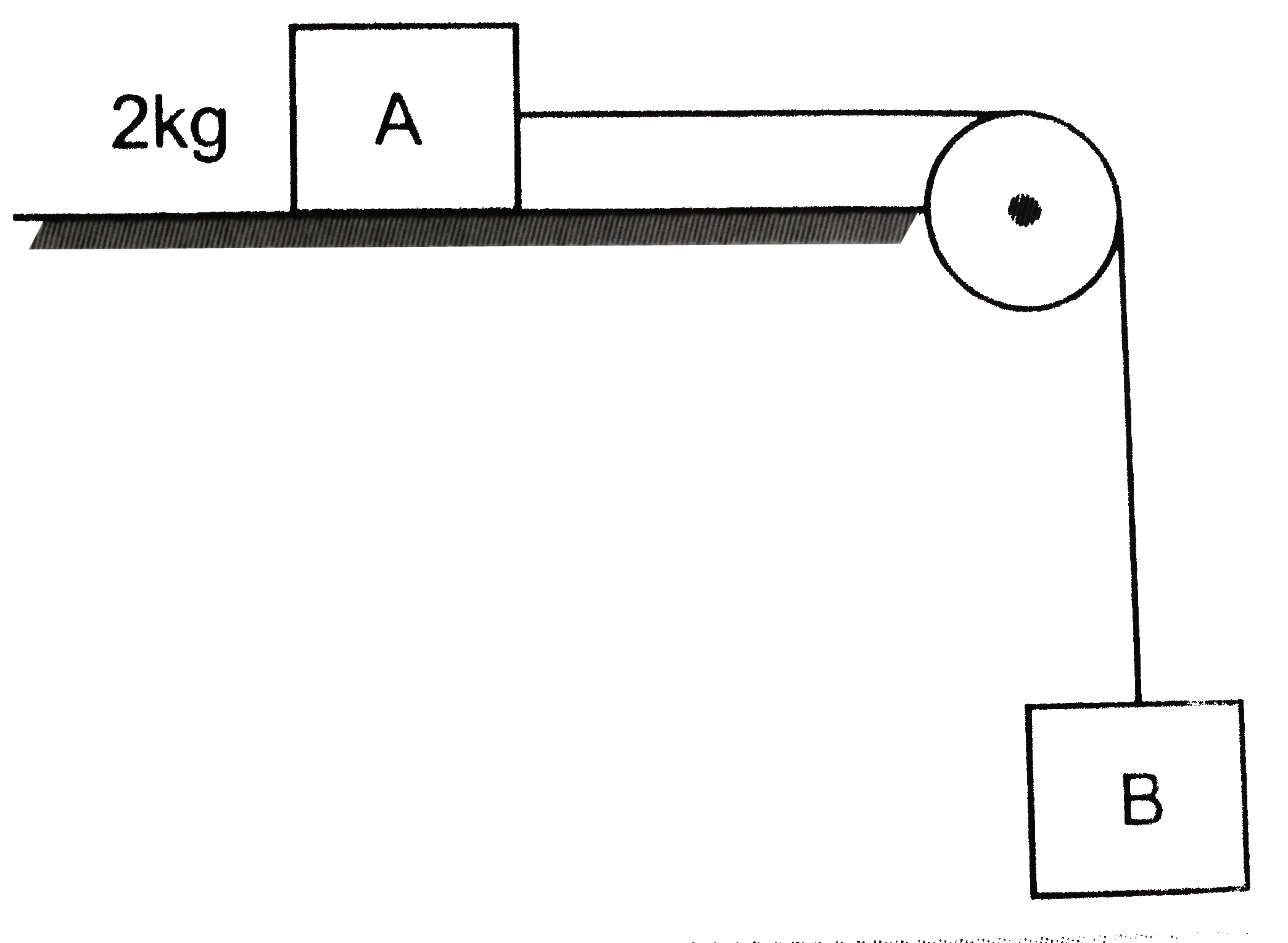 .01:41View Solution
.01:41View SolutionThe rear side of a truck is open and a box of mass `20kg` is placed on the truck `4m` away from the open end `mu = 0.15` and `g = 10m//s^(2)` The truck starts from rest with an acceleration of `2m//s^(2)` on a straight road The box will fall off the truck when it is at a distance from the starting point equal to .
03:45View SolutionA parabolic bow1 with its bottom at origin has the shape `y = (x^(2))/(20)` where `x` and `y` are in metre The maximum height at which a small mass m can be placed on the bowl without slipping is (coeff of static friction `0.5`
 .02:28View Solution
.02:28View SolutionA block of mass m is on an inclined plane of angle `theta`. The coefficient of friction between the block and the plane is `mu` and `tanthetagtmu`. The block is held stationary by applying a force P parallel to the plane. The direction of force pointing up the plane is taken to be positive. As P is varied from `P_1=mg(sintheta-mucostheta)` to `P_2=mg(sintheta+mucostheta)`, the frictional force f versus P graph will look like
07:07View SolutionA block of mass m is in contact with the cart `C` as shown in The coefficient of static friction between the block and the cart is `mu` The acceleration a of the cart that will prevent the block from falling satisfies
 .02:30View Solution
.02:30View SolutionA block is moving on an inclined plane making an angle `45^@` with the horizontal and the coefficient of friction is `mu`. The force required to just push it up the inclined plane is 3 times the force required to just prevent it from sliding down. If we define `N=10mu`, then N is
07:31View SolutionA mas m hangs with help of a string wraped around a pulley on a frictionless bearling. The pulley has mass m and radius R. Assuming pulley to be a perfect uniform circular disc, the acceleration of the mass m, if the string does not slip on the pulley, is:
02:09View SolutionAn insect craws up a hemispherical surface very slowly (see fig.). The coefficient of friction between the insect and the surface is `1//3`. If the line joining the center of the hemispherical surface to the insect makes an angle `alpha` with the vertical, the maximum possible value of `alpha` is given by
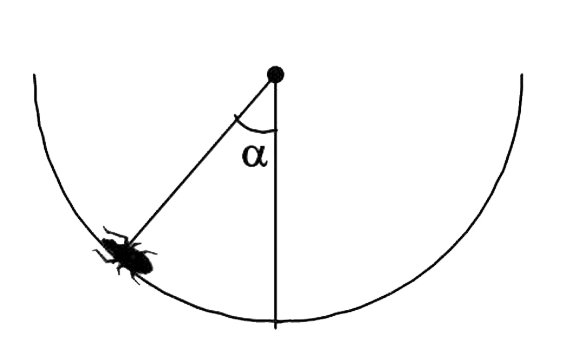 05:03View Solution
05:03View SolutionA system consists of three masses `m_(1)` , `m_(1)` , `m_(1)` , `m_(2)` and `m_(3)` connected by a string passing over a pulley `P` . The mass `m_(1)` hangs freely and `m_(2)` and `m_(3)` are on a rough horizontal table (the coefficient of friction=mu) The pulley is frictionless and of negligible mass. The downward acceleration of m`1` is (Assume `m_(1)=m_(2)=m_(3)=m`).
 05:44View Solution
05:44View SolutionA block of mass is placed on a surface with a vertical cross section given by `y=x^3/6`. If the coefficient of friction is 0.5, the maximum height above the ground at which the block can be placed without slipping is:
02:21View SolutionWhat is the minimum velocity with which a body of mass `m` must enter a vertical loop of radius `R` so that it can complete the loop?
01:32View SolutionA ring of mass M and radius R is rotating with angular speed `omega` about a fixed vertical axis passing through its centre O with two point masses each of mass `(M)/(8)` at rest at O. These masses can move radially outwards along two massless rods fixed on the ring as shown in the figure. At some instant the angular speed of the system is `(8)/(9) omega` and one fo the masses is at a distance of `(3)/(5) R` from O. At this instant the distance of the other mass from O is
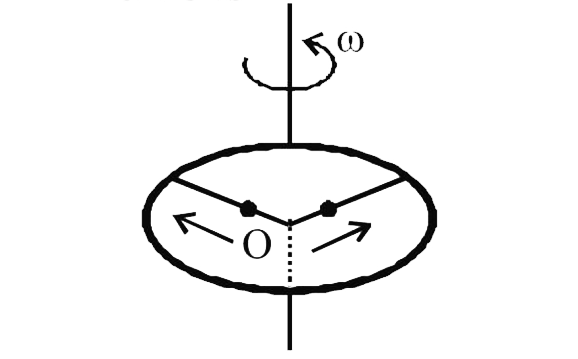 06:35View Solution
06:35View SolutionA gramphone record is revolving with an angular velocity `omega`. A coin is placed at a distance `R` from the centre of the record. The static coefficient of friction is `mu`. The coin will revolve with the record if
02:53View SolutionA ball of mass (m) 0.5g is attached to the end of a string having length (L) 0.5m. The ball is rotated on a horizontal circular path about vertical axis. The maximum tension that the string can bear is 324N. The maximum possible value of anguar velocity of ball(in radian/s) is
 05:27View Solution
05:27View SolutionA car of mass `1000kg` negotiates a banked curve of radius `90m` on a fictionless road. If the banking angle is `45^(@)` the speed of the car is:
04:06View SolutionA car of mass `m` is moving on a level circular track of radius `R` if `mu_(s)` represents the static friction between the road and tyres of the car, the maximum speed of the car in circular motion is given by.
03:03View SolutionA wire, which passes through the hole in a small bead, is bent in the form of quarter of a circle. The wire is fixed vertically on ground as shown in the figure. The bead is released from near the top of the wire and it slides along the wire without friction. As the bead moves from A to B, the force it applies on the wire is
 03:39View Solution
03:39View SolutionIn an elevator the actual weight of a person is equal to the apparent weight when .
02:22View SolutionThe force exerted by the floor of an elevator on the foot of a person standing there is more than the weight of the person if the elevator is
04:04View SolutionA spring connects two particles of masses `m_(1)` and `m_(2)` A horizontal force `F` acts on `m_(1)` Ignoring friction when the elongation of the spring is `x` then [when the spring has maximum elongation]
 .03:01View Solution
.03:01View SolutionA body is in translatory equilibrium when .
02:29View SolutionIn which of the following cases the net force is zero .
02:46View SolutionA block is stationary on an inclined plane If the coefficient of friction between the block and the plane is `mu` then
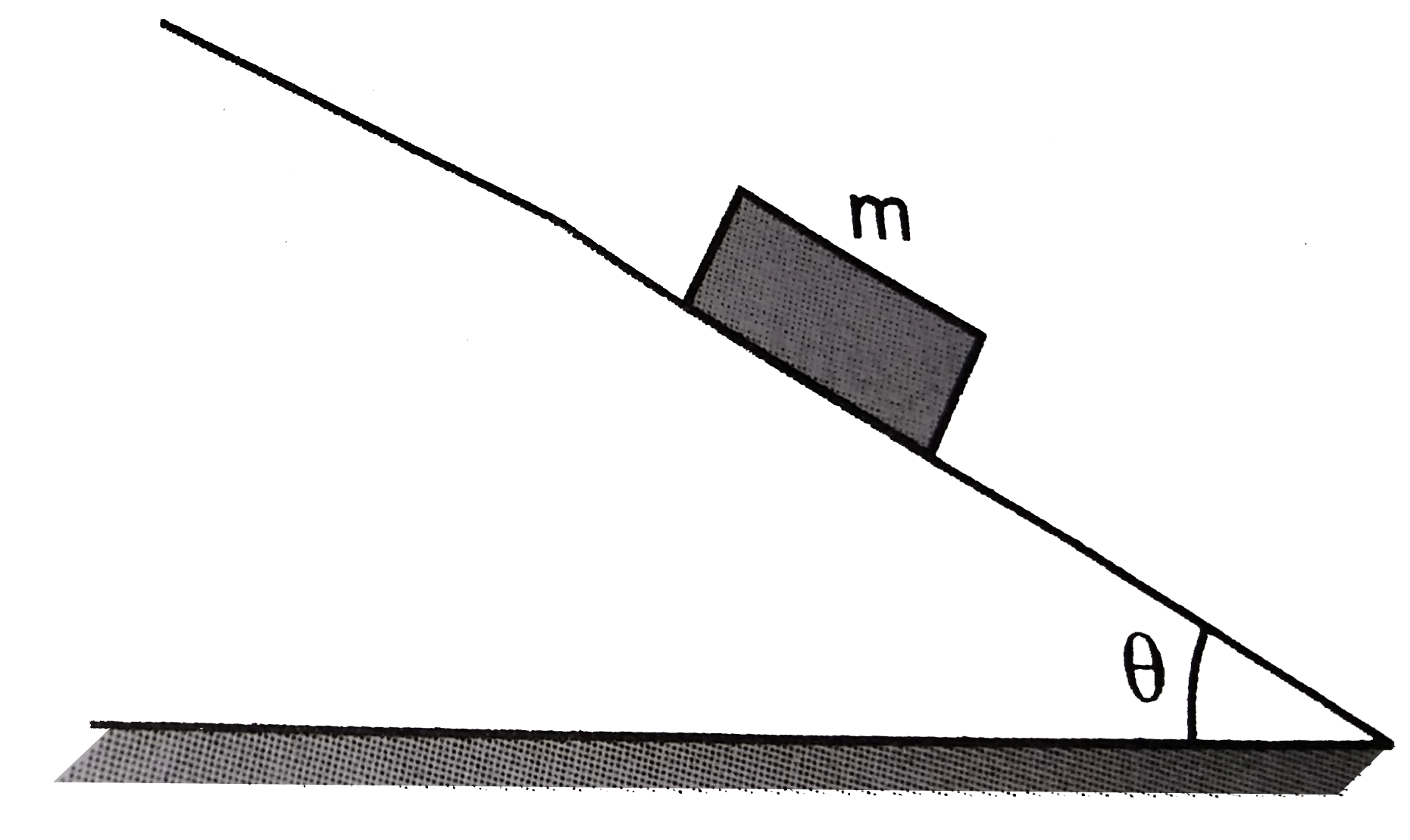 .02:53View Solution
.02:53View SolutionWhich of the following statement (s) is (are) correct ?
04:10View SolutionA small block of mass of 0.1 kg lies on a fixed inclined plane PQ which makes an angle `theta` with the horizontal. A horizontal force of 1N acts on the block through its centre of mass as shown in figure.

The block remains stationary if (take `g=10m//s^2`)06:39View SolutionA string of negligible mass going over a clamped pulley of mass m supports a block of mass M as shown in the figure. The force on the pulley by the clamp is given by
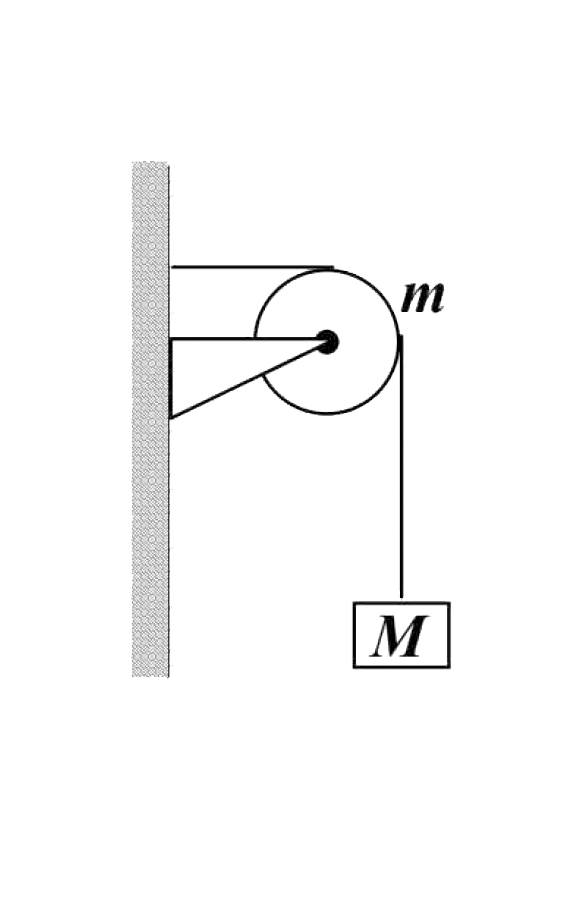 03:33View Solution
03:33View SolutionMark the correct statements .
02:20View SolutionFigure shows the displacement of a particle going along the X-axis as a function of time. The force acting on the particle is zero in the region
 01:46View Solution
01:46View SolutionA particle stays at rest as seen in a frame. We can conclude that
03:05View SolutionIf the tension in the cable supporting an elevator is equal to the weight of the elevator, the elevator may be
02:37View SolutionIf all matter were made of electrically neutal particles such as neutrons.
05:18View SolutionA cylinder rolls up an inclined plane, reaches some height, and then rolls down (without slipping throughout these motions). The directions of the frictional force acting on the cylinder are.
06:40View SolutionA block of mass m is at rest under the action of force F against a wall as shown in figure. Which of the following statement is incorrect?
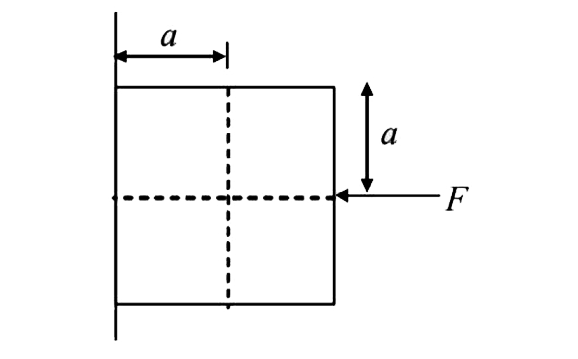 03:17View Solution
03:17View SolutionIn the figure, a ladder of mass m is shown leaning against a wall. It is in static equilibrium making an angle `theta` with the horizontal floor. The coefficient of friction between the wall and the ladder is `mu_1` and that between the floor and the ladder is `mu_2.` the normal reaction of the wall on the ladder is `N_1` and that of the floor is `N_2.` if the ladder is about to slip. than
 05:58View Solution
05:58View SolutionConsider a vehicle going on a horizontal rod towards east. Neglect any force by the air. The frictional forces on the vehicle by the road
02:53View SolutionWhen a bicycle is in motio, the force of friction exerted by the ground on the two wheels is such that it acts
01:20View SolutionIn the figure, a ladder of mass m is shown leaning against a wall. It is in static equilibrium making an angle `theta` with the horizontal floor. The coefficient of friction between the wall and the ladder is `mu_1` and that between the floor and the ladder is `mu_2.` the normal reaction of the wall on the ladder is `N_1` and that of the floor is `N_2.` if the ladder is about to slip. than
 05:58View Solution
05:58View SolutionAccording to Newton s second law of motion `F =ma` where `F` is the force required to produce an acceleration a in a body of mass m If a = 0 then `F = 0` no external force is required to move a body uniformly along a straight line If a force `F` acts on a body for t seconds the effect of the force is given by Impulse =F `xx` t = change in linear momentum of the body
A cricket ball of mass `150g` is moving with a velocity of `12m//s` and is hit by a bat so that the ball is turned back with a velocity of `20m//s` if duration of contact between the ball and the bat is `0.01sec` The impulse of the force is .03:18View SolutionAccording to Newton s second law of motion `F =ma` where `F` is the force required to produce an acceleration a in a body of mass m If a = 0 then `F = 0` no external force is required to move a body uniformly along a straight line If a force `F` acts on a body for t seconds the effect of the force is given by Impulse =F `xx` t =change in linear momentum of the body
Average force exerted by the bat is .01:46View SolutionAccording to Newton s second law of motion `F =ma` where `F` is the force required to produce an acceleration a in a body of mass m If a = 0 then `F = 0` no external force is required to move a body uniformly along a straight line If a force `F` acts on a body for t seconds the effect of the force is given by Impulse =F `xx` t = change in linear momentum of the body
The retardation of the ball is .02:33View SolutionAn impulsive force of 100 N acts on a body for 1 s What is the change in its linear momentum ?
00:49View SolutionFriction between any two surfaces in contact is the force that opposes the relative motion between them The force of limiting friction (F) between any two surfaces in contact is directly proportional to the normal reaction (R) between them `F prop R` or `F = mu R` where `mu` is coefficient of limiting friction If `theta` is angle of friction then `mu = tan theta`
A force of `49N` is just able to move a block of wood weighing `10kg` on a rough horizontal surface The coefficient of friction is .02:40View SolutionFriction between any two surfaces in contact is the force that opposes the relative motion between them The force of limiting friction (F) between any two surfaces in contact is directly proportional to the normal reaction (R) between them `F prop R` or `F = mu R` where `mu` is coefficient of limiting friction If `theta` is angle of friction then `mu = tan theta`
The angle of friction in the above question is .01:37View SolutionFriction between any two surfaces in contact is the force that opposes the relative motion between them The force of limiting friction (F) between any two surfaces in contact is directly proportional to the normal reaction (R) between them `F prop R` or `F = mu R` where `mu` is coefficient of limiting friction If `theta` is angle of friction then `mu = tan theta`
A horizontal force of `1.2kg` is applied on a `1.5kg` block which rests on a horizontal surface If the coefficient of friction is `0.3` force of friction is .07:40View SolutionFriction between any two surfaces in contact is the force that opposes the relative motion between them The force of limiting friction (F) between any two surfaces in contact is directly proportional to the normal reaction (R) between them `F prop R` or `F = mu R` where `mu` is coefficient of limiting friction If `theta` is angle of friction then `mu = tan theta`
The acceleration produce in the block in the above question is .View Solution
JEE (Main and Advanced)/ Medical Entrance Special questions and complete solutions for chapter LAWS OF MOTION of PRADEEP PHYSICS (HINGLISH) of Class 11
All Exercises from PRADEEP Class 11 PHYSICS LAWS OF MOTION
- Additional Examples / Exercises
- Advanced problems for competitions
- Assertion- Reason Type Questions
- conceptual problmes
- Curiosity Question
- EXERCISES
- Fill in the blanks
- Higher order thinking skills
- Integer Type Questions
- JEE (Main and Advanced)/ Medical Entrance Special
- Long Answer Questions
- Multiple Choice Questions
- Problems for practice
- sample problems
- Short Answer Questions
- Short Answer Questions
- solved examples
- Value Based Questions with Answers
- Very short answer questions
